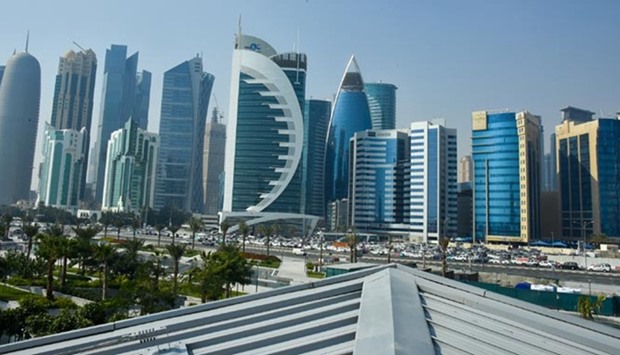Qatar's move to increase the freehold residential zones from three to 10 will have a positive impact on the sector, according to DTZ Qatar, a leading real estate services firm.
"The potential market for residential sales has been expanded by Law No 16 of 2018, which was implemented in March of 2019, as the number of freehold zones in Qatar has been increased from three to 10," DTZ said.
Non-Qataris can have freehold ownership of property in 10 areas while 16 areas have been identified where they can use real estate for 99 years, HE the Minister of Justice and Acting Minister of State for Cabinet Affairs Dr Issa bin Saad al-Jafali al-Nuaimi had said in March this year.
The areas under freehold zones are West Bay (Area 66), The Pearl-Qatar (66), Al Khor Resort (74), Rawdat Al Jahaniyah (investment area), Al Qassar (administrative area 60), Al Dafna (administrative area 61), Onaiza (administrative area 63), Al Wasail (69), Al Khraij (69) and Jabal Theyleeb (69).
The areas where non-Qataris can use real estate for 99 years are: Msheireb (Area 13), Fereej Abdelaziz (14), Doha Al Jadeed (15), New Al Ghanim (16), Al Refaa and Old Al Hitmi (17), Salata (18), Fereej Bin Mahmoud (22), Fereej Bin Mahmoud (23), Rawdat Al Khail (24), Mansoura and Fereej Bin Dirham (25), Najma (26), Umm Ghuwailina (27), Al Khulaifat (28), Al Sadd (38), Al Mirqab Al Jadeed and Fereej Al Nasr (39) and the Doha International Airport area (48).
The Planning and Statistics Authority's recent reports suggest both the overall number of residential sales and the total value of transactions in January and February grew 40% and 32% year-on-year respectively; however, the average price per transaction fell 6% as purchasers took advantage of a ‘softening’ market.
Several new residential towers have recently been completed in Viva Bahriya, with a significant number of additional units in Abraj Quartier, the Marina District and Viva Bahriya expected to complete within the next 12-18 months.
Furthermore, quite a few new residential towers are due to come to the market in West Bay, although these are largely serviced apartments developments, some of which are connected to 5-star hotel entities.
The increased supply has offered a range of options available to residents in all income brackets. The average rental reduction of more than 20% over the past three years has increased the affordability of many prime locations, with increased demand for West Bay and The Pearl-Qatar being driven by residents looking to ‘trade-up’.
While residential rents have typically fallen by between 5% and 8% over the past 12 months, DTZ said, a lack of available three-bedroom units in Porto Arabia has seen rents for these units increase, bucking the general trend.
The large increase in the number of one-bedroom units being delivered to the market in new and upcoming developments (compared with two- and three-bedroom units) is likely to see greater downward rental pressure on these units in the coming year.
Apartment sales prices in The Pearl Qatar vary between districts and unit sizes. New studio and one-bedroom units in Viva Bahriya still command prices in excess of QR16,000 per sqm, while two-bedroom, second-hand apartments in Porto Arabia have been transacting for less than QR13,000 per sqm.
Occupancy rates in villa compounds have been recovering throughout Doha, particularly in some of the more sought-after developments, DTZ said, adding this has resulted in rental levels stabilising after a period of decline between 2016 and 2018.


